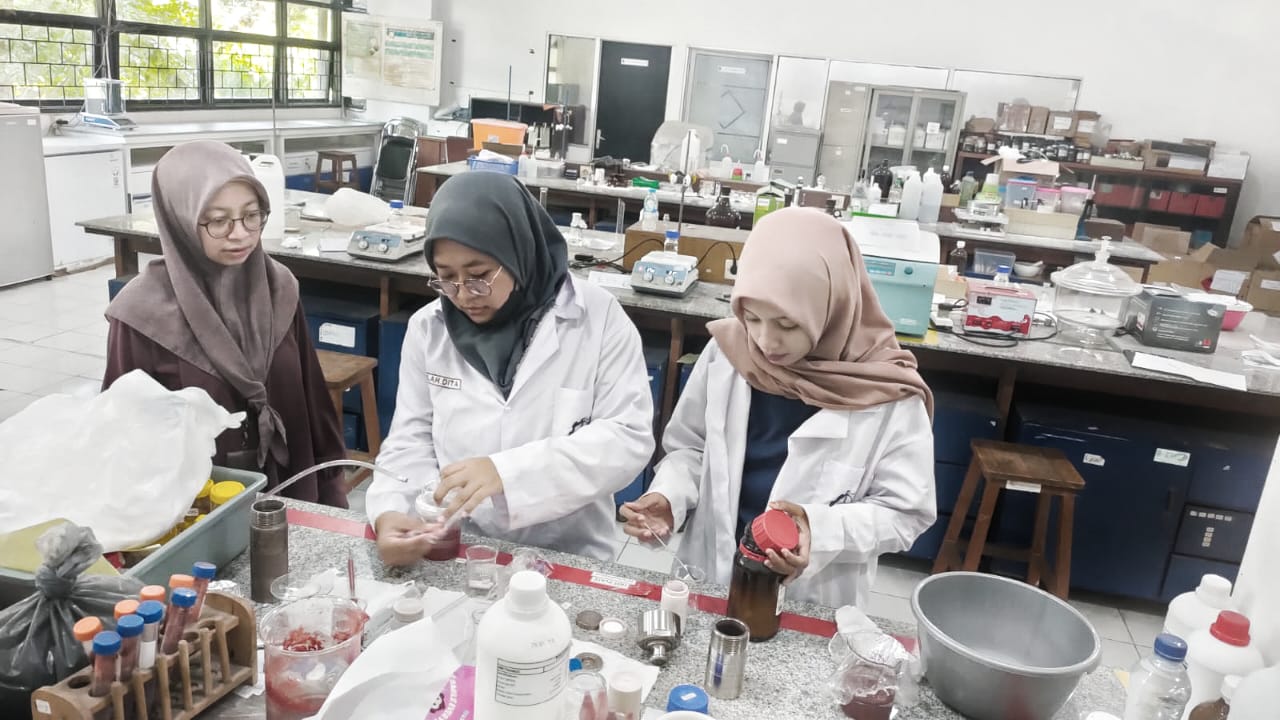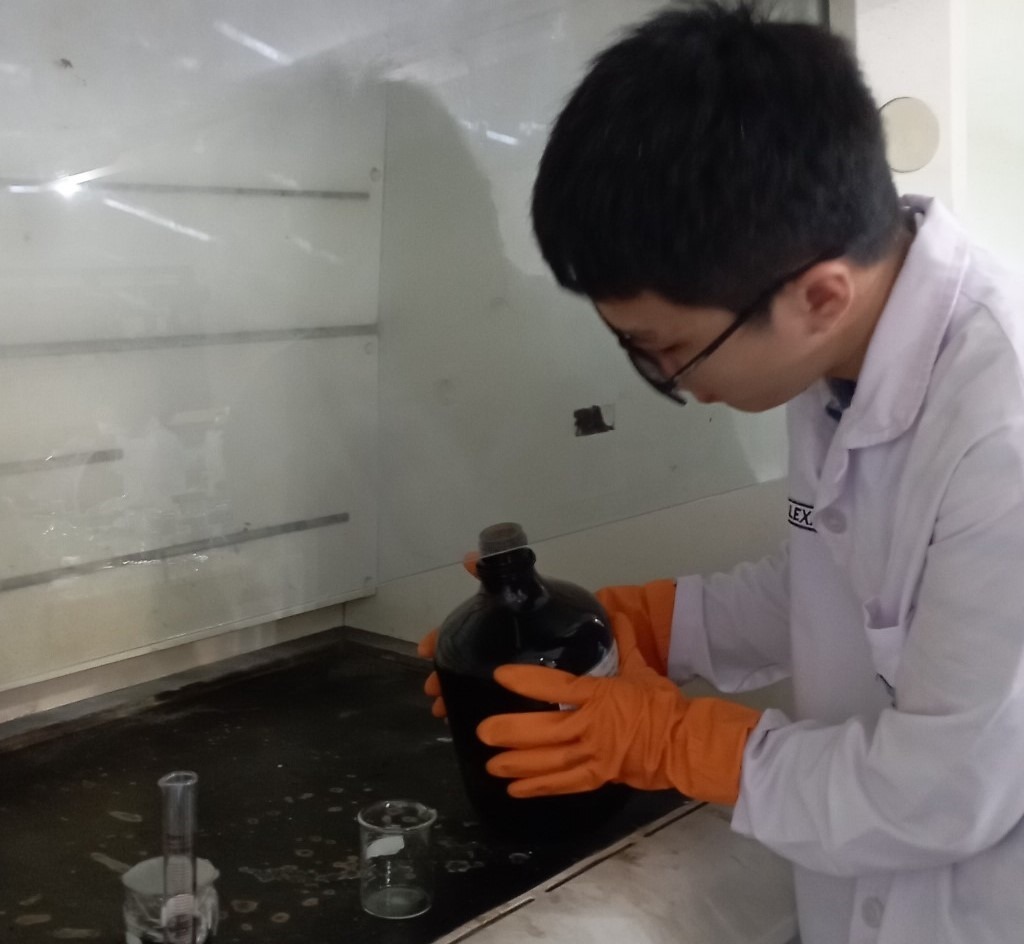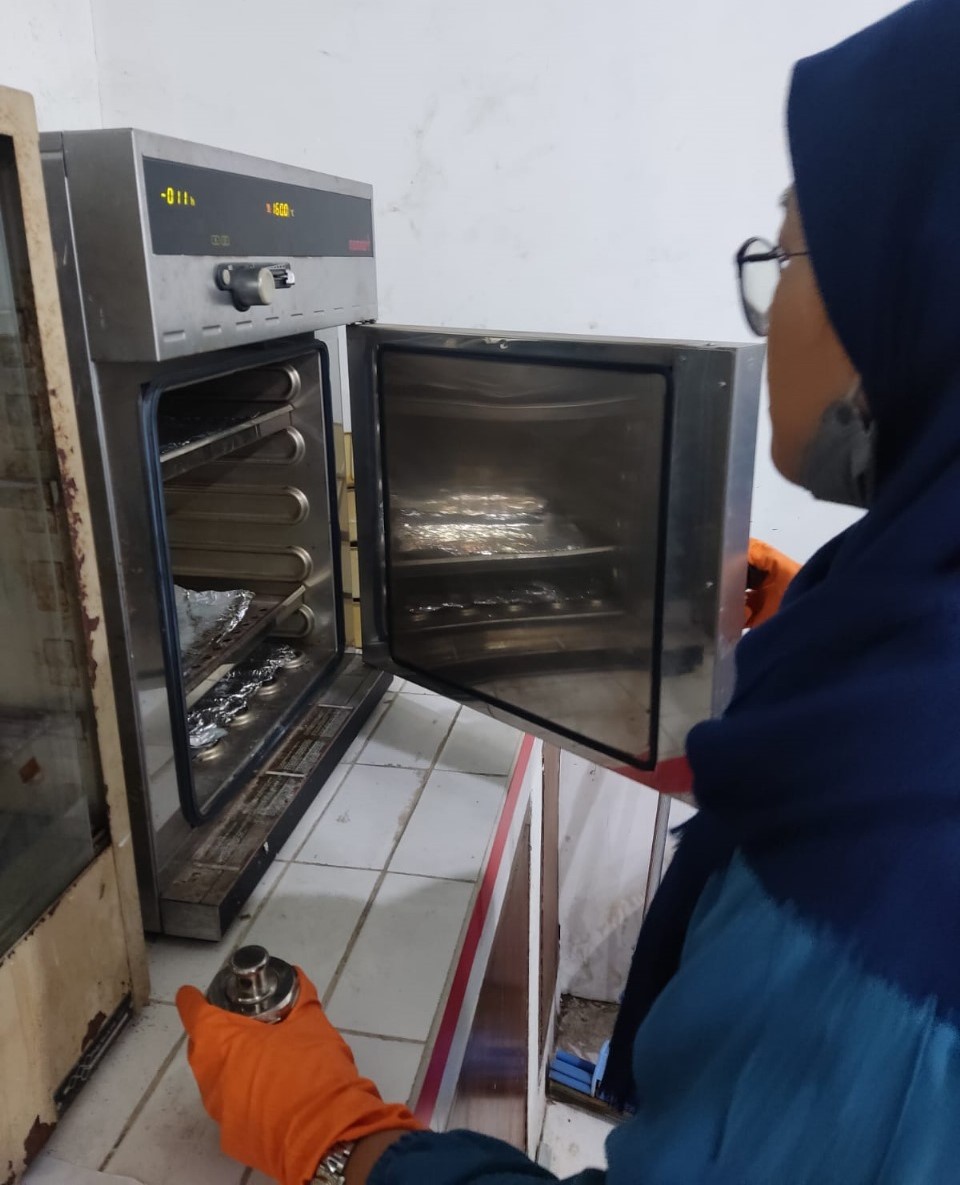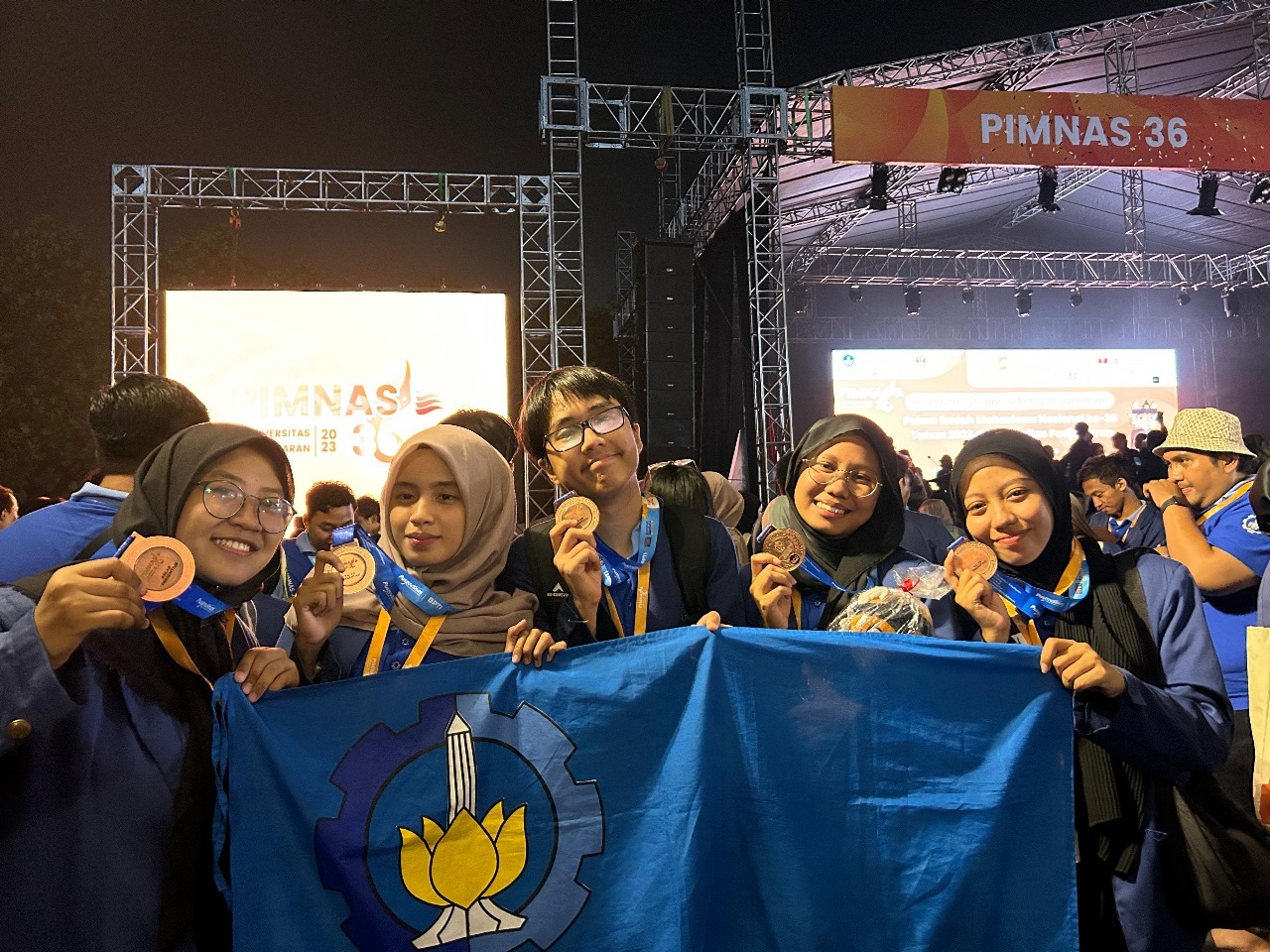ITS Students Develop the Potential of The Water Splitting Method for EBT

Nabila Dita Anaqah (center) with her teammates when testing photocatalytic activity at the ITS Fuel Chemistry Laboratory’
ITS Campus, ITS News – The need for new, renewable energy sources (EBT) is one of the efforts to help reduce global warming. Supporting this, a team of students from the Institut Teknologi Sepuluh Nopember (ITS) researched the effectiveness of photocatalyst materials for increasing hydrogen gas production through the water splitting method.
The head of the research team, Nabilah Dita Anaqah, explained that hydrogen is a carbon-emission-free fuel with energy reaching 2.5 to 3 times greater than gasoline. This compound has broad combustion capabilities, so it can be applied in a variety of applications. “The potential of this compound can be applied in power plants, hydrogen fuel cells, hydrogen vehicles, and combustion,” she explained.
Determined to contribute to the nation, this ITS Chemistry Department student attempted to test the effectiveness of photocatalyst materials using the water splitting method for hydrogen gas production. “Similar to the working principle of the electrolysis method, which uses energy from a battery, the water splitting reaction uses solar photon energy to produce energy,” she explained.
Nabila continued, this method uses solar energy to break down water molecules into hydrogen and oxygen. Semiconductor materials play a major role in capturing light energy, stimulating the breakdown of water, and facilitating existing chemical reactions. “The development carried out aims to provide high operational efficiency and have appropriate material characteristics,” she explained.

Lioz Alexander, one of the members of the research team when taking one of the compounds, namely NH4OH, for the process of synthesizing the hematite compound
Examining various journals, this girl from Surabaya saw that the hematite material (alpha-Fe2O3) has a smaller band gap than the titanium oxide (TiO2) material, which is often used in photocatalytic applications. This shows that hematite is better at producing electron movement when exposed to light. “However, further modifications are needed to guarantee the performance of this material,” she added.
After working on it for five months, the strategy for modifying the hematite material compound was carried out by adding other doping materials such as cerium oxide (CeO2), nitrogen, and carbon. “This addition aims to improve the shortcomings of each added compound to ensure the performance of the system and prevent the emergence of unwanted compound output,” explained this class of 2020 student.
Nabilah revealed that the use of a single hematite semiconductor was not able to reduce the carbon rate to the desired value. Therefore, another semiconductor is needed in the form of CeO2, which has high thermal stability and prevents carbon flow. “Modification of these two materials aims to increase solar energy conversion and photocatalytic reactions,” she added.

Nabila Dita Anaqah when inserting samples to carry out the hydrothermal process in order to control the structure and increase the ability of material properties’
Meanwhile, the addition of nitrogen-doped mesoporous carbon material aims to improve the performance of the oxygen reduction reaction in order to reduce the rate of oxygen formation and increase hydrogen production. “The addition of all doping materials aims to obtain the desired material properties to increase hydrogen production through the water splitting method,” she explained.
To ensure validity, the research team, accompanied by lecturer Dr. Yuly Kusumawati MSi, also carried out various material characterization checks. Not only that, photocatalytic activity testing was also carried out to determine the effect of changes in the amount of nitrogen and carbon doping composition. “Through this, the effectiveness of changing one of the doping amounts on the amount of hydrogen production can be visualized,” said Nabila.
This bespectacled student hopes that the research she is conducting can bring fresh air to the development of EBT in Indonesia. Nabilah expressed her team’s desire to collaborate with the National Research and Innovation Agency (BRIN) in developing this water splitting method. “Hopefully this research can be collaborated with BRIN so that it can produce clean energy for society,” she concluded hopefully.

The innovation carried out by the ITS student team succeeded in winning a bronze medal at the Pimnas event in the 2023 PKM Exact Research (RE) category
Thanks to the hard work and effort carried out by the team, this research has also succeeded in winning a bronze medal in the National Student Scientific Week (Pimnas) category for the Student Creativity Program (PKM) Exact Research (RE) 2023. Members of this research team consist of Reca Ardiyanti Rahman, Mintang Mulyanto, Lioz Alexander, and Andi Fitri Ayu Lestari from the ITS Chemistry Department class of 2020 and 2021. (ITS Public Relations)
Reporter: Ricardo Hokky Wibisono
Related News
-
ITS Sends Off 12 Free Mudik Vehicles Ahead of Eid Al-Fitr
The dispatch of 11 bus fleets carrying ITS students for the Free Mudik ITS 2024 ITS Campus, ITS News
January 25, 2024 16:01 -
ITS Lecturer Wins 2024 Female Science Talents Intensive Tracks from Germany
Sri Fatmawati SSi MSc PhD, a lecturer at the Department of Chemistry, ITS, has emerged as the winner of
January 25, 2024 16:01 -
ITS Shares Tips & Tricks on SNBT 2024 Socialization
(from left) Executive Secretary of SNPMB 2024, Bekti Cahyo Hidayanto SSi MKom, Head of the Admissions Subdirectorate at ITS,
January 25, 2024 16:01 -
Supporting Defense in Indonesia, ITS Professor Creates Anti-Radar Material
Professor Dr. Mashuri SSi MSi, while delivering his academic oration on anti-radar materials during the ITS Professorial Inauguration. ITS
January 25, 2024 16:01
